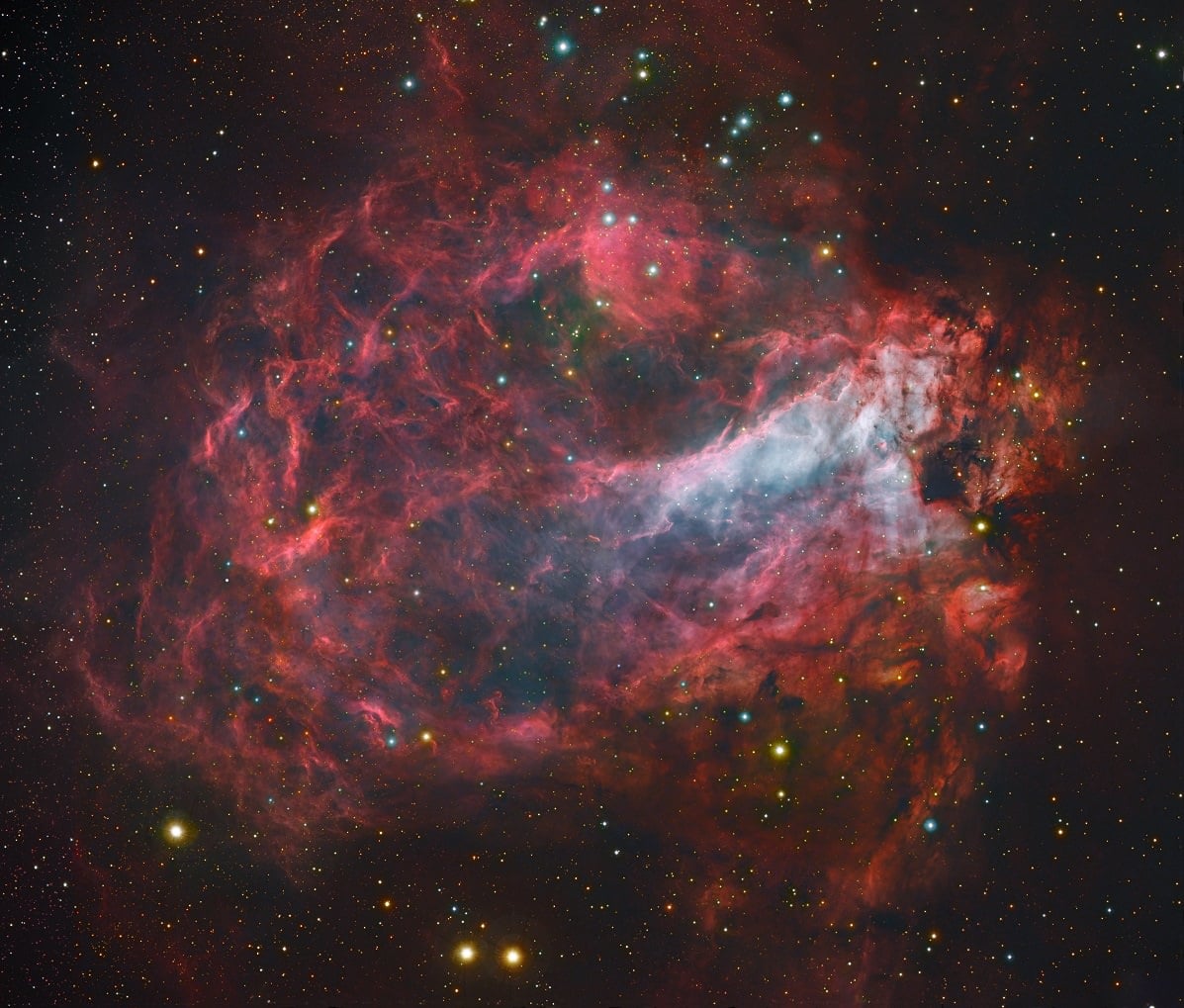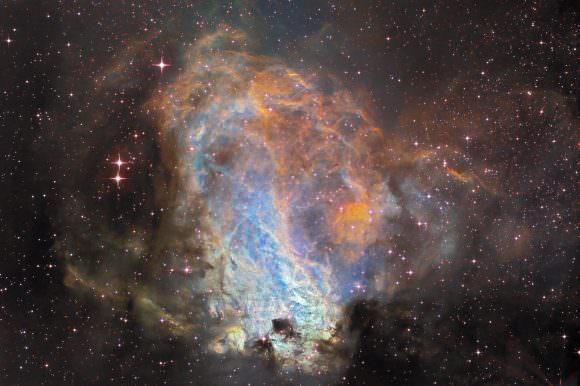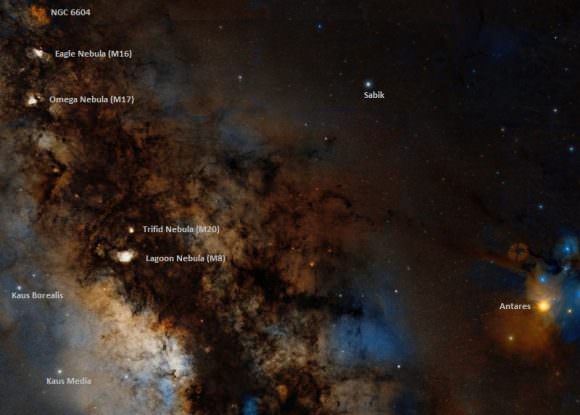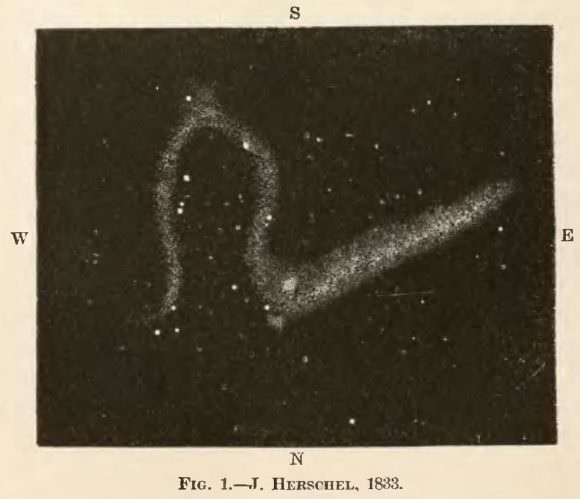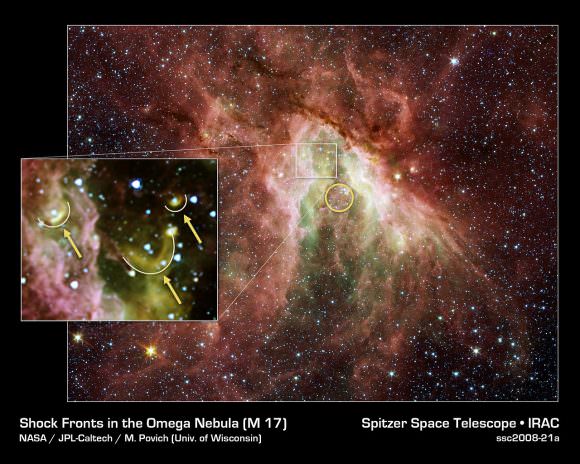Welcome back to Messier Monday! In our ongoing tribute to the great Tammy Plotner, we take a look at the Messier 17 nebula – aka. The Omega Nebula (and a few other names).
In the 18th century, while searching the night sky for comets, French astronomer Charles Messier began noticing a series of "nebulous objects" in the night sky. Hoping to ensure that other astronomers did not make the same mistake, he began compiling a list of these objects,. Known to posterity as the
Messier Catalog
, this list has come to be one of the most important milestones in the research of Deep Sky objects.
One of these is the star-forming nebula known as Messier 17 - or as it's more famously known, the Omega Nebula (or Swan Nebula, Checkmark Nebula, and Horseshoe Nebula). Located in the
Sagittarius
constellation, this beautiful nebula is considered one of the brightest and most massive star-forming regions in our galaxy.
Description:
From its position in space some 5,000 to 6,000 light years from Earth, the "Omega" nebula occupies a region as large as 40 light years across, with its brightest porition covering a 15 light year expanse. Like many nebulae, this giant cosmic cloud of interstellar matter is a starforming region in the Sagittarius or Sagittarius-Carina arm of our Milky Way galaxy.
What you see is the hot hydrogen gas that is illuminated when its particles are excited by the hottest of the stars that have just formed within the nebula. Also, some of the light is being reflected by the nebula's own dust. These remain hidden by dark obscuring material, and we know their presence only through the detection of their infrared radiation.
[caption id="attachment_129732" align="aligncenter" width="580"]
Image of M17 showing specific elements based on their color, including sulfur (red), hydrogen (green), oxygen (blue). Credit: NASA/Ignacio de la Cueva Torregrosa
[/caption]
In an study titled "
Interstellar Weather Vanes: GLIMPSE Mid-Infrared Stellar-Wind Bowshocks in M17 and RCW49
", astronomer Matthew S. Povich (et al.) of the University of Wisconsin-Madison said of M17:
Is Messier 17 still actively producing stars? You bet. Even protostars have been discovered hiding in its folds. As M. Nielbock (et al),
wrote in 2008
:
[caption id="attachment_129730" align="aligncenter" width="580"]
The location of the Omega Nebula, with other Messier objects and major stars shown. Image: Wikisky
[/caption]
How many new stars lay hidden inside? Far more than the famous Orion nebula may contain. So says a
2013 study
produced by L. Eisa (et al):
History of Observation:
The Omega Nebula was first discovered by Philippe Loys de Cheseaux and is just one of the six nebulae in his documents. As he wrote of his discovery:
"
[caption id="attachment_129731" align="aligncenter" width="580"]
Omega Nebula sketch by John Herschel, 1833. Credit: messier-objects.com
[/caption]
By historical accounts, it was Sir William Herschel who may have truly had a little bit of insight on what this object might one day mean when he observed it on his own and reported:
So where did the name "Omega Nebula" come from? That credit goes to John Herschel, who stated in his observing notes:
[caption id="attachment_129733" align="aligncenter" width="580"]
Infrared images of M17, taken by the Spitzer Space Telescope. Credit: NASA/JPL-Caltech/M. Povich (Univ. of Wisconsin)
[/caption]
Locating Messier 17:
Because M17 is both large and quite bright, its distinctive "2" shape isn't hard to make out in optics of any size. For binoculars and image correct finderscopes, try starting with the constellation of
Aquila
and begin tracing the stars down the eagle's back to Lambda. When you reach that point, continue to extend the line through to Alpha Scuti, then southwards towards Gamma Scuti. M16 is slightly more than 2 degrees (about a fingerwidth) southwest of this star.
If you are in a dark sky location, you can also identify it easily in binoculars by starting at the M24 "Star Cloud", north of Lambda Sagittari (the teapot lid star), and simply scanning north. This nebula is bright enough to even cut through moderately light polluted skies with ease, but don't expect to see it when the Moon is nearby. You'll enjoy the rich starfields combined with an interesting nebula in binoculars, while telescopes will easily begin resolving the interior stars.
And here are the quick facts on M17 for your convenience:
- Object Name
-
Messier 17
- Alternative Designations
-
M17, NGC 6618, Omega, Swan, Horseshoe, or Lobster Nebula
- Object Type
-
Open Star Cluster with Emission Nebula
- Constellation
-
Sagittarius
- Right Ascension
-
18 : 20.8 (h:m)
- Declination
-
-16 : 11 (deg:m)
- Distance
-
5.0 (kly)
- Visual Brightness
-
6.0 (mag)
- Apparent Dimension
-
11.0 (arc min)
And be sure to enjoy this video from the European Southern Observatory (ESO) that shows this nebula in all its glory:
We have written many interesting articles about Messier Objects here at Universe Today. Here's Tammy Plotner's
Introduction to the Messier Objects
, ,
M1 – The Crab Nebula
,
M8 – The Lagoon Nebula
, and David Dickison's articles on the
2013
and
2014
Messier Marathons.
Be to sure to check out our complete
Messier Catalog
. And for more information, check out the
SEDS Messier Database
.
 Universe Today
Universe Today
